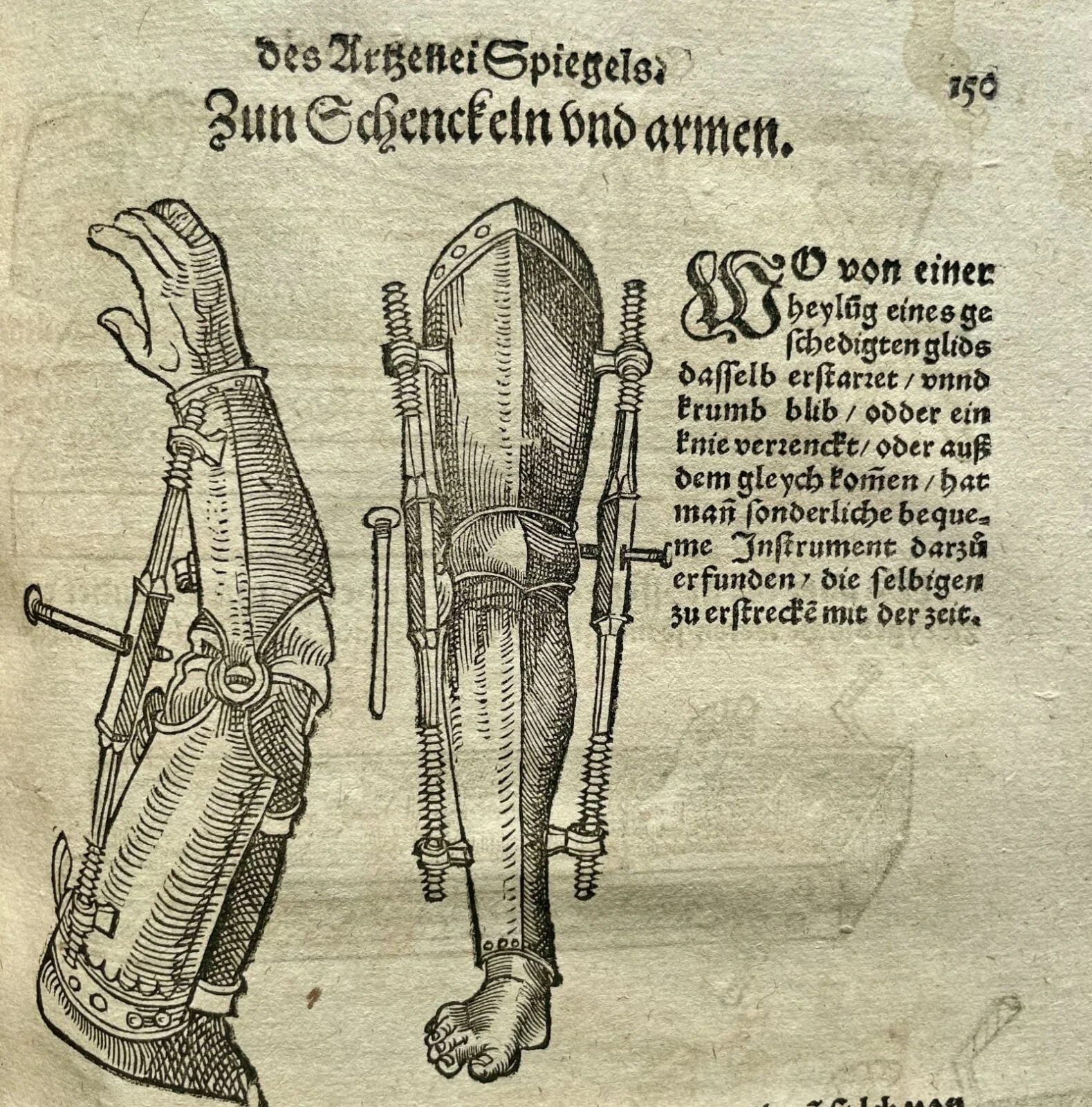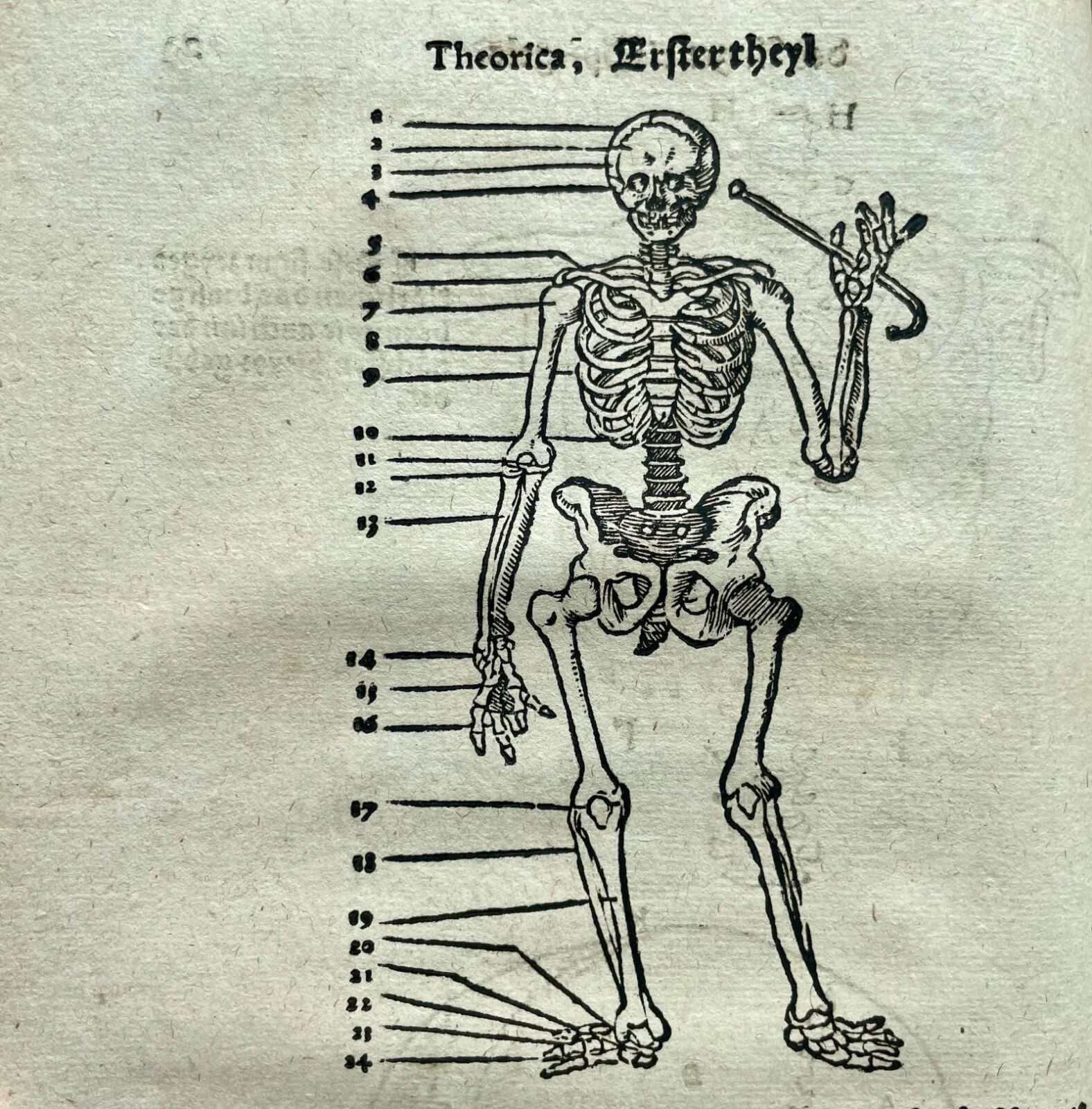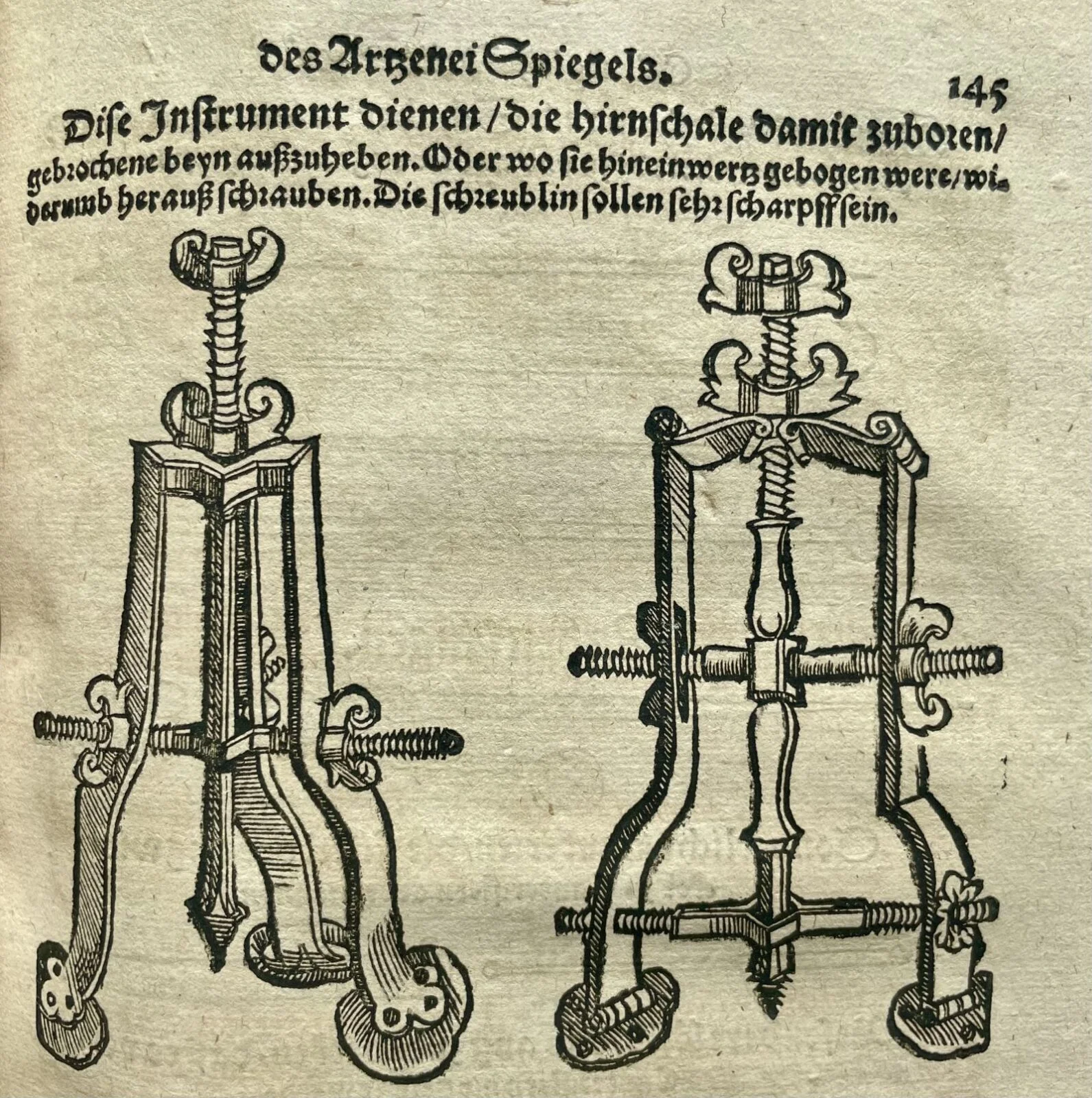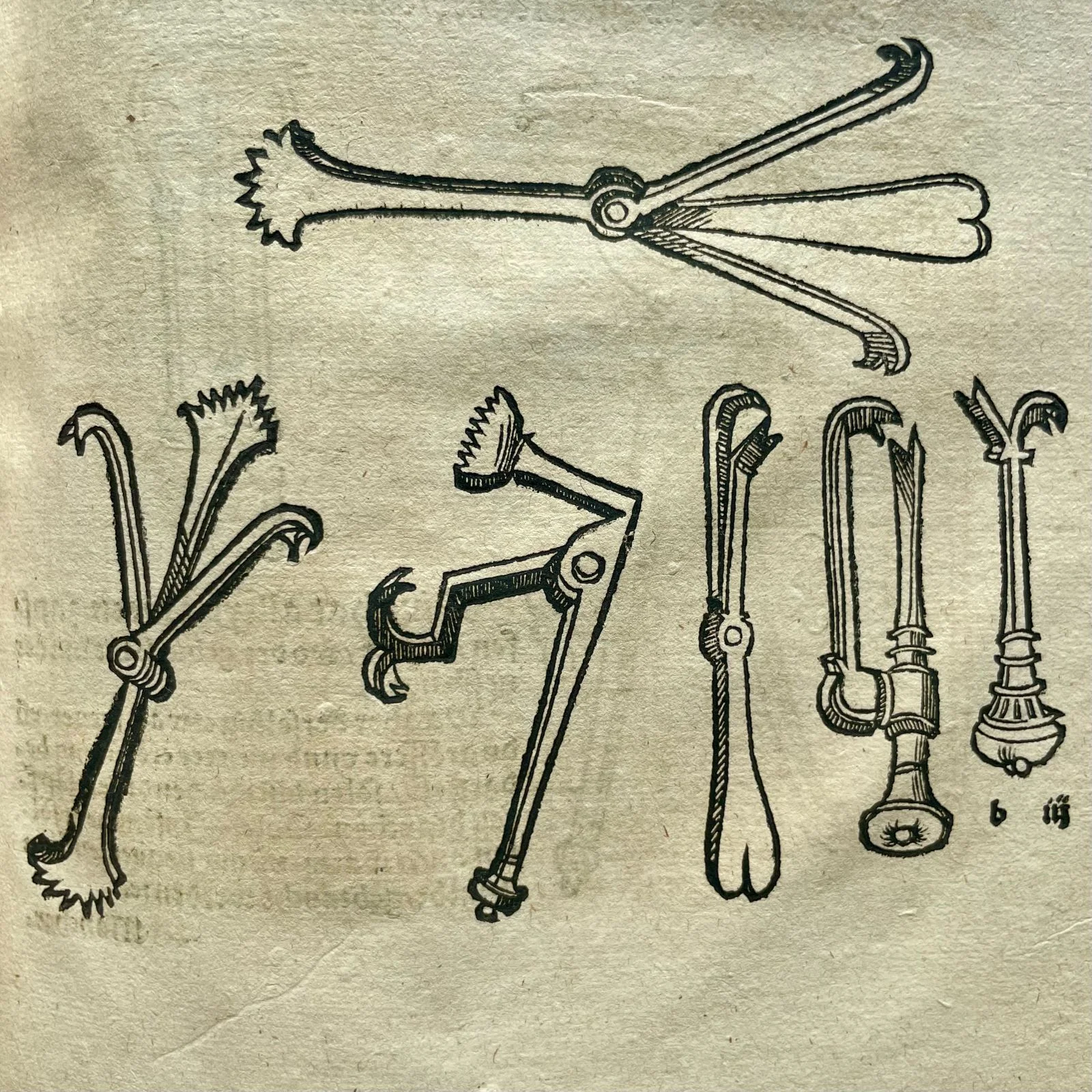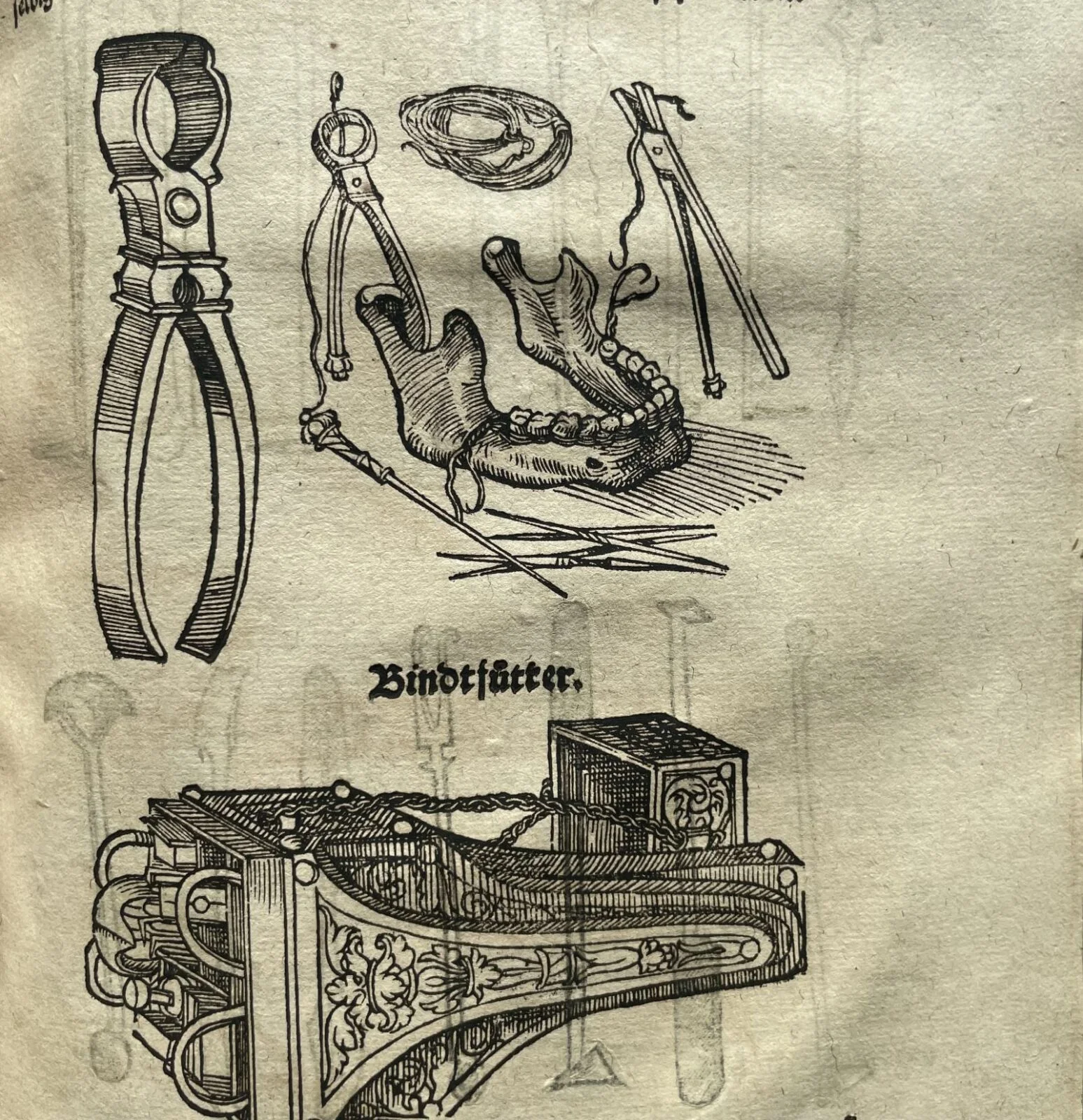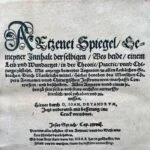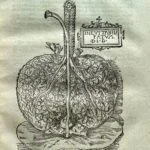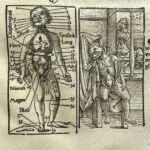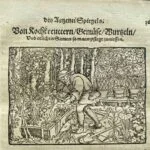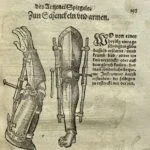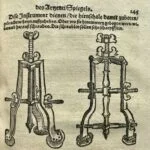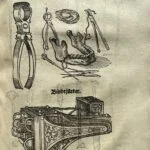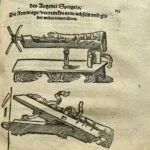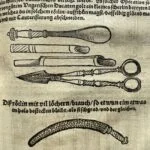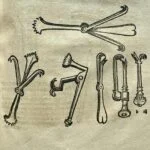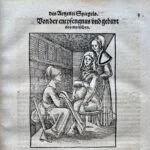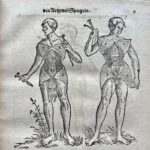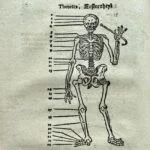
Johann Dryander’s old print on healthy lifestyle
On the occasion of World Health Day, which was celebrated on Sunday, the University Library is presenting a remarkable old print by Johann Dryander (1500-1560), an eminent personality, professor of medicine and mathematics in Marburg. His innovative approach to medical education made a significant contribution to the knowledge of human anatomy. Dryander was also one of the first to use illustrations as a means of documenting and teaching anatomy. These woodcuts not only served as a visual supplement to medical texts, but also made an important contribution to the development of medical educational publications.
His work “Artznei Spiegel” was of an instructional nature. It covered a wide range of medical knowledge. Dryander addressed healthy lifestyle issues in it, offering advice on diet and physical activity, which shows how important prevention and a holistic approach to health was to him. Recommendations such as avoiding sleep after meals or remarks on the ill effects of garlic and onions on memory are testament to his attempts to understand the impact of diet on health. He promoted Dryander bread made from pure flours to facilitate digestion, while in terms of meat, he recommended choosing pork (young), healthy and easily digestible. If eggs, only from hens. According to the medic, only fresh eggs, which are small and oblong in shape, should be eaten. Cooked ones were supposed to be less nutritious than fried ones, although more effective as a dietary component in disease states. Wine was one of the healthy and invigorating drinks, especially with herbs, provided, however, that it was not consumed immediately after bathing (one must cool down and then taste). Children, on the other hand, were definitely not to be given this liquor, even mixed with water. He advised scholars to take a walk every morning before meals.
In addition to life and dietary advice, Dryander also offered recipes for, among other things, good vinegar, mustard or ointment for hair growth. He pointed out the healing properties of apples (they were beneficial for the skin and heart). Strawberries were excellent for the metabolism. The same was true of cherries. Plums were mentioned for their colours and flavours, but not all were considered healthy for the body. Some were harmful to the stomach and liver.
The visualisation of medicinal gardens, with plants grown in formal settings, indicates the author’s interest in herbalism and botany as important elements of medicine. This was also reflected in the praise of honey, which came from bees, not wasps. Specific flowers and plants gave the honey its desired medicinal properties.
Dryander also touched on uroscopy and bloodletting. He devoted a lot of space to pregnancy and childbirth, the preparation for childbirth itself, and perinatal care. The depiction of surgical instruments in the engravings at the end of the work shows how important it was for Dryander to combine theory and medical practice.
Dryander was a figure who made a significant contribution to the development of medicine, particularly in the fields of anatomy, medicinal botany and a holistic approach to health. His works, enriched with illustrations, not only educated his contemporaries, but also provided a knowledge base for future generations of medics.
The copy held by the Library in the Old Prints Department dates from 1557. It is annotated by the author of the work.
sygn. 406609
Authors of the text: Anna Szczotka-Sobiecka, Grzegorz Pawlik, BUWr Special Collections reading room.

